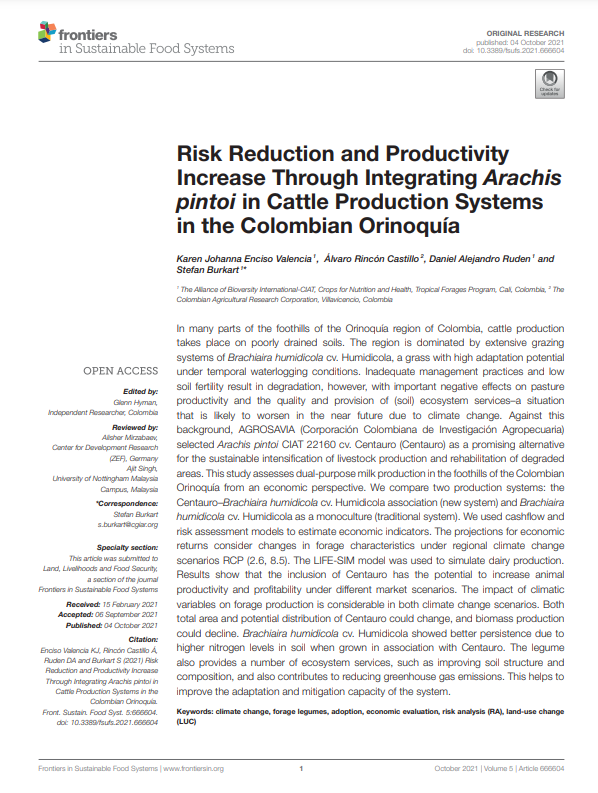In many parts of the foothills of the Orinoquía region of Colombia, cattle production takes place on poorly drained soils. The region is dominated by extensive grazing systems of Brachiaira humidicola cv. Humidicola, a grass with high adaptation potential under temporal waterlogging conditions. Inadequate management practices and low soil fertility result in degradation, however, with important negative effects on pasture productivity and the quality and provision of (soil) ecosystem services–a situation that is likely to worsen in the near future due to climate change.
Against this background, AGROSAVIA (Corporación Colombiana de Investigación Agropecuaria) selected Arachis pintoi CIAT 22160 cv. Centauro (Centauro) as a promising alternative for the sustainable intensification of livestock production and rehabilitation of degraded areas. This study assesses dual-purpose milk production in the foothills of the Colombian Orinoquía from an economic perspective. We compare two production systems: the Centauro–Brachiaira humidicola cv. Humidicola association (new system) and Brachiaira humidicola cv. Humidicola as a monoculture (traditional system). We used cashflow and risk assessment models to estimate economic indicators. The projections for economic returns consider changes in forage characteristics under regional climate change scenarios RCP (2.6, 8.5). The LIFE-SIM model was used to simulate dairy production. Results show that the inclusion of Centauro has the potential to increase animal productivity and profitability under different market scenarios.
The impact of climatic variables on forage production is considerable in both climate change scenarios. Both total area and potential distribution of Centauro could change, and biomass production could decline. Brachiaira humidicola cv. Humidicola showed better persistence due to higher nitrogen levels in soil when grown in association with Centauro. The legume also provides a number of ecosystem services, such as improving soil structure and composition, and also contributes to reducing greenhouse gas emissions. This helps to improve the adaptation and mitigation capacity of the system.![]()
Enciso, Karen; Rincón Castillo, Álvaro; Ruden, Alejandro; Burkart, Stefan.

